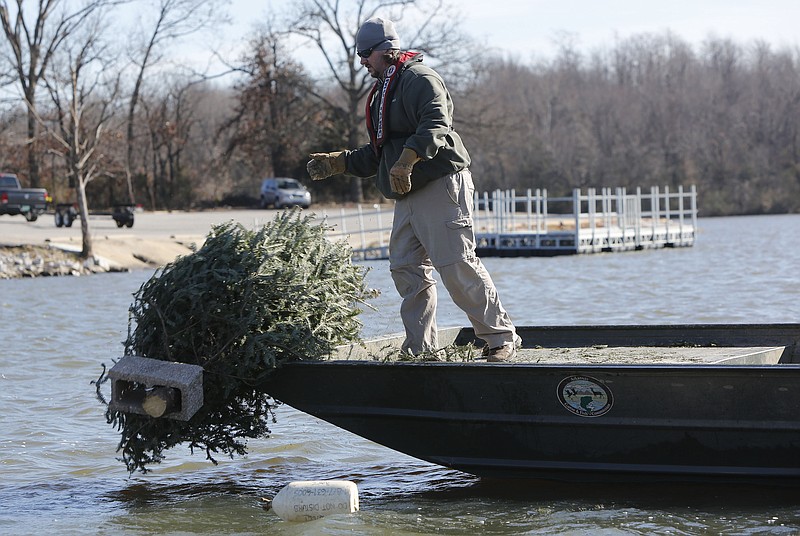The Arkansas Game and Fish Commission is offering up to $1,000 to youth fishing clubs for completing habitat projects to help improve fishing opportunities on their home lakes.
Created in 2017 by the commission's Black Bass Program, the Youth Tournament Fishing Organization Aquatic Habitat Program enables any fishing tournament organization affiliated with an Arkansas junior high, high school or college to apply for an award ranging from $500 to $1,000 for building and sinking brush piles or engaging in other habitat improvements in Arkansas lakes.
"There's no requirement on what the funds are spent on to help the team," Jeff Buckingham, Black Bass Program biologist with the commission, said in the Arkansas Wildlife Weekly newsletter.
"It can be used for the habitat project, or the team can be resourceful and find free materials to use as habitat and keep the money to offset tournament expenses, pay for team jerseys or anything else that will help them grow," Buckingham said.
Buckingham said teams can reach out to him at the Black Bass Program or contact their local fisheries biologist to help brainstorm ways to collect materials.
"We can help coordinate with the club and the owner of the lake where they want to do their project to see what can be done to help," Buckingham said. "We've used PVC, wood, natural brush and many other materials for fish attractors in the past and can help the kids and their sponsors think of materials that are safe for the water and low- to no cost."
In addition to creating possible tournament-winning hot spots, these habitat projects can help the fishery. With additional ambush cover, predator fish such as bass and crappie are able to catch their prey using less energy, which can translate into better growth rates in the long run. Additionally, the small spaces in complex brush piles can be shelter for many young fish and baitfish to keep the fishery's future bright.
"Brush piles may not produce a lakewide effect, but they can be beneficial on a local level," Buckingham said. "Concentrating the habitat in a few particular coves can help fish in that area."
The idea of the program isn't just to offer some funds to young anglers or create helpful habitat, but to show these young anglers how they fit into the big picture of conservation in The Natural State.
"Our anglers are our greatest resource in Arkansas," said Jason Olive, assistant chief of the Game and Fish Commission's Fisheries Division. "Not only do they provide funding for conservation through license sales and their equipment purchases, but our relationship with them also is the key to promoting fisheries management and helping prevent the spread of aquatic nuisance species like Giant Salvinia. We want to have a positive relationship with them from day one of their fishing careers."
Applicants should submit a proposal before beginning work on their habitat project to ensure their efforts are legal.
"There are some lakes in Arkansas that have restrictions on adding brush, others have requirements on the depth man-made cover needs to be to avoid issues with boat traffic," Buckingham said.
Additionally, the team must supply the commission with the coordinates of the habitat they placed for the program.
"We want all anglers to benefit from the effort," Buckingham said. "We will post the coordinates on the AGFC's interactive map after the award is given."
Funds from the award must be routed through a team's account at its school, and school officials should be listed as the contact person for the grant proposal. Applications are available at the Black Bass Program's webpage.
